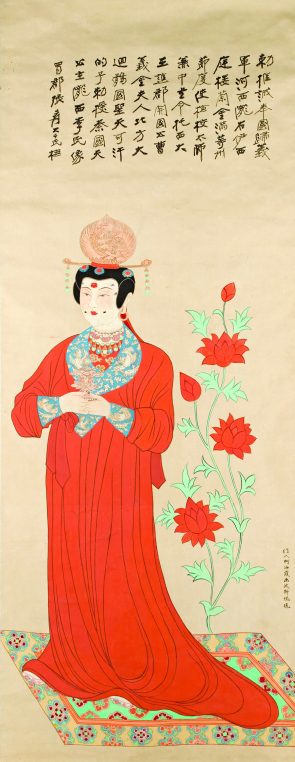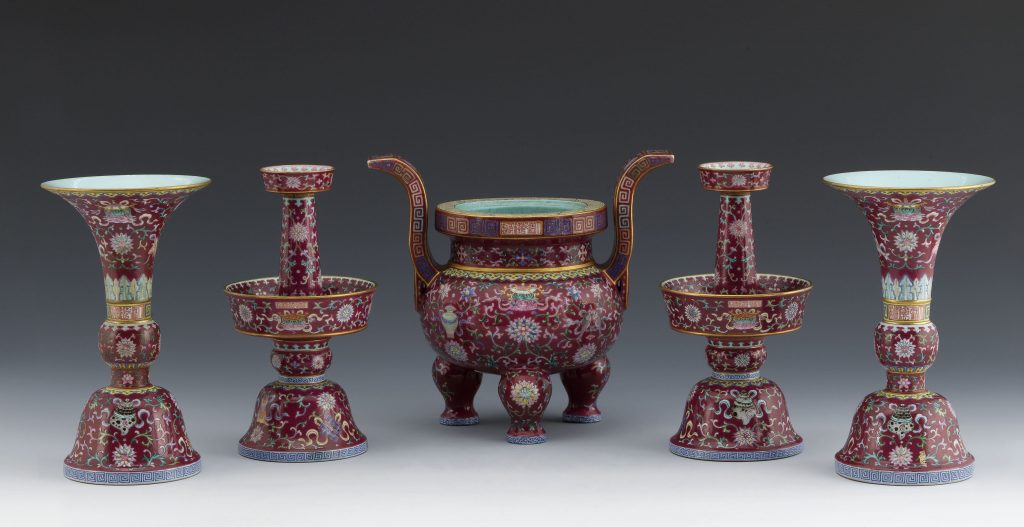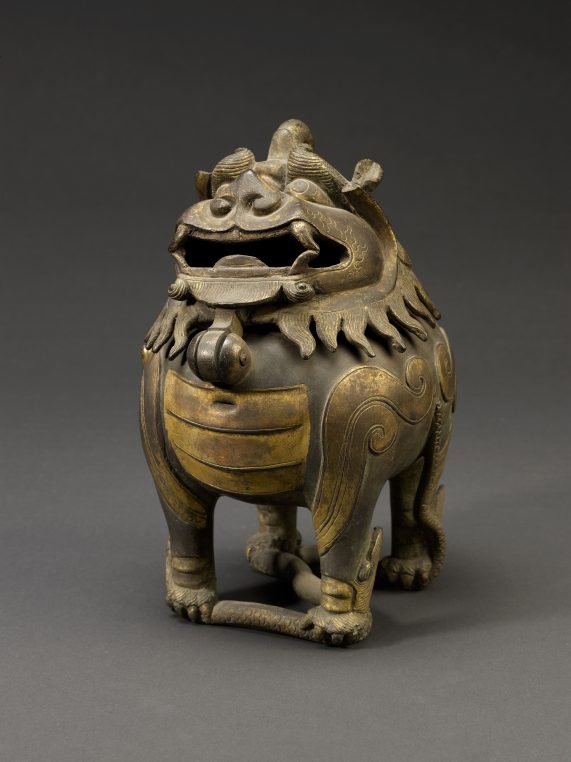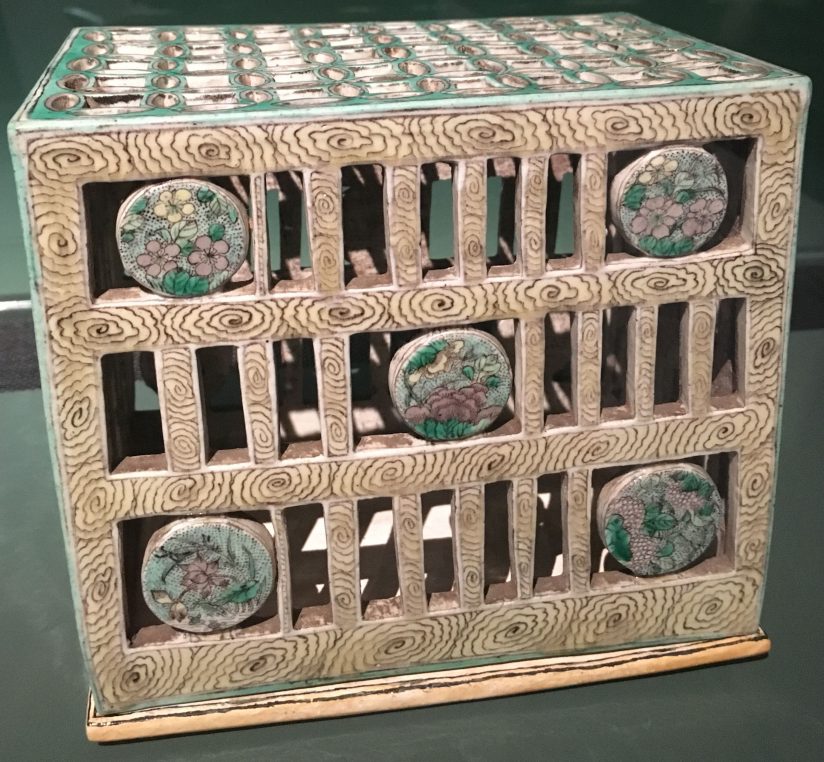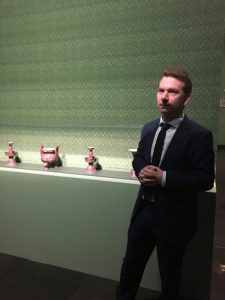When the Cernuschi museum opened 120 years ago on parc Monceau, the monumental buddha in the main room was surrounded by incense burners, reflecting what the founder of the museum, Henry Cernuschi, had noticed during his trip to Asia in 1871 to 1873. This is what enticed Eric Lefebvre, director of the museum, to research and produce this wonderful exhibition on Perfumes from China” the culture of incense in times of the Emperors, with the vice director of the Shanghai museum, Li Zhongmou.
The culture of incense burning dates back to the Zhou period (1046 -256 bc) when it was associated to rites betweeen divinities and humans. The heavy smoke occuring during the ceremonies, chased bad evils and its smells attracted gods and good spirits. Later, the discovery of sandal wood and resins promoted the use of perfumes in lay circumstances.
Then came buddhism under the reign of Han Emperor Mingdi in 57-75 ac, with a large iconography illustrating the rites of incense burning and six centuries later, the Tang dynasty imported new Indian customs. With the development of trade, many varieties of perfumes also came from the Middle East.
Soon incense is tied to literary customs and becomes part of the elite’s life in the X th century. Flowers are associated in smells and the first books on perfumes are published in 1 115. The size of domestic incense burners change. Houses of the Ming dynasty have perfume burning in the main room where ancestors are honored. Meditation is accompanied by incense which purifies the room. Then in the 16 th century under the Ming dynasty, bedrooms, pillows, ladies’ hair and sleeves are perfumed. It becomes a lifestyle pleasure.
Later in the 19 th century, under the Qing dynasty, incense burners will become more decorative and purely artistic. Many different “designs” are elaborated to burn perfumes which become part of the furniture and the luxuries of sophisticated people. Another art develops, that of little curiosity objects sculpted in precious woods with wonderful smells.
Studies have been made by Frédéric Obringer, scientific adviser of the show : perfume recipes in China were very elaborate and some people ate pills made of a mix of ingredients that let smells out of their body after five days through the mouth, ten days through the skin, then through the bones and the whole body, thus perfuming their clothes.
Throughout the exhibition four fragrances have been elaborated in the Chinese style by François Demachy, perfume creator for Dior. The show is a lovely excuse to go back to this unique privately founded museum with a very special atmosphere on beautiful Parc Monceau. (Until August 26, Musée Cernuschi, 7 avenue Velazquez)
Share this Post
